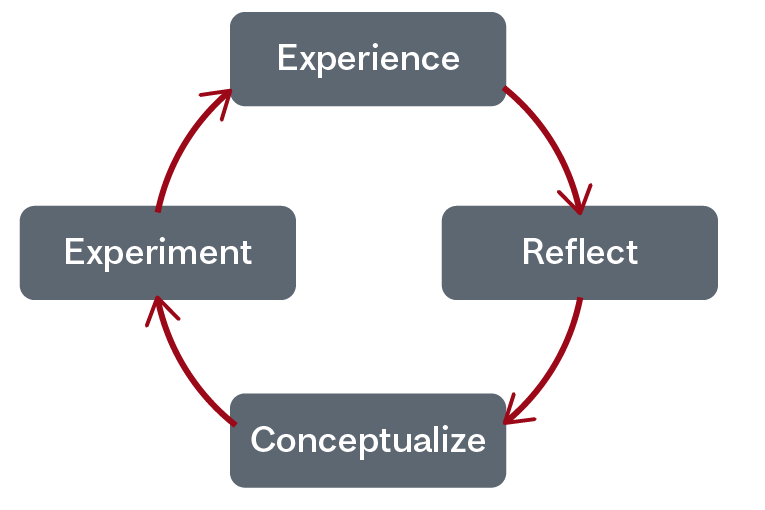Introduction
Experiential Learning (EL) is a pedagogical approach where students are immersed in a hands-on activity related to their course concepts and asked to reflect on that activity, which in turn impacts how they approach the activity itself.
EL has many known benefits to student learning and is an important priority for Desautels Faculty of Management.
This toolkit will focus on the ways instructors can intentionally harness the learning capacity of Experiential Learning in their courses and offer some concrete tools to help in your course planning.
Why do Experiential Learning?
When well designed, EL has many known pedagogical benefits. By having concrete, hands-on experiences, students are better able to bridge the gap between theory and practice.
In other words, students understand how the abstract concepts they learn about in class apply to the real world, outside of the classroom setting.
Students who participate in EL also show higher overall interest and engagement in course materials, and improved critical thinking and problem solving. Because students are given the opportunity to engage directly with an experience, they are often more motivated to complete the activity, which often translates into greater engagement in the classroom overall.
EL is also beneficial as students enter the workforce, both increasing job preparedness and success on the job market.
These benefits are what the Lewtas Office of Experiential Learning has in mind when we aim to increase student opportunities for EL.
What is Experiential Learning?
Experiential Learning can be understood as a cycle, where students engage with an experience, reflect on the experience to better understand the experience itself and the way it connects back to the course concepts.
The cycle itself can be thought of on different levels, happening anywhere from one specific lesson all the way up to the curriculum level.
The Experiential Learning Cycle

→ Experience
Students engage in an experience.
→ Reflect
Students are asked to reflect on the experience they just had, taking a step back to process and observe. Students note differences or similarities between the experience and abstract theories they have encountered. and begin to draw connections to prior knowledge.
→ Conceptualize
Students make connections between their experience and prior knowledge. These connections help students generate hypotheses about the experience or about their prior knowledge.
→ Experiment
Students test out their new hypotheses on new experiences or by re-engaging with another aspect of the initial experience.
This cycle is not meant to be seen as discrete steps, per se, but as a way to highlight the iterative nature of experiential learning and to stress the importance of reflection alongside the experience.

